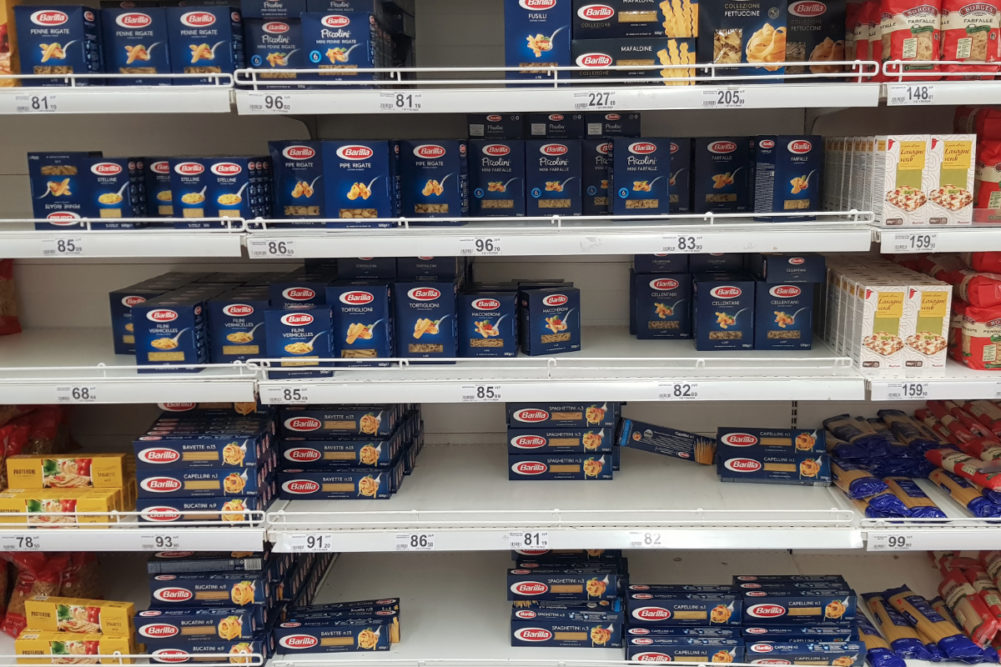KANSAS CITY – The coronavirus (COVID-19) pandemic has had a wide-ranging impact on the grain-based foods industry.
Home baking has spurred a spike in demand for family flour. Bread, buns and rolls have been nearly wiped out as more consumers turn to sandwiches as a daily meal. And in the pasta category, the product’s extended shelf life has made it a popular choice for consumers looking to stockpile in the event that stay-at-home orders linger longer than a few weeks.
Late last month, a durum miller whose mill has been grinding a solid six days, said pasta manufacturers who supply product to supermarkets “were going 90 mph” while those who supply product to restaurants “are going zero mph.”
“Many mills supply both sectors,” the miller said. “But the demand for dry pasta in the grocery stores overwhelms everything else.”
Industry analysts said there were no shortages of durum, semolina or pasta products, only logistical issues in supplying grocers and mass merchandisers at an unprecedented pace for early spring.
“The industry can meet the demand hands down; it’s just a matter of lining things up,” a miller said, noting supply chain improvement during the second week of heightened buying patterns brought on by community lockdown mandates in cities and states desperate to flatten the curve of COVID-19.
The rapid depletion of pasta products at the grocery level left manufacturers concentrating on the execution of nearby logistics.
The National Pasta Association, which canceled its annual meeting in mid-March due to COVID-19, said demand for its members’ products “has risen greatly” with more people staying at home due to school and business shutdowns and self-quarantines.
“In order to keep pasta supplied on grocery store shelves, National Pasta Association (NPA) members are working tirelessly to increase production and deliver products quickly and efficiently,” the association said in a March 27 update. “In addition to enhanced cleaning efforts, our members are also taking care of their employees by limiting exposure to outside personnel, working from remote locations when possible and closely following CDC guidelines.
“As things change almost daily, we will continue to adapt and adjust as necessary during this unprecedented time.”
The pandemic’s impact on dry pasta sales was not fully reflected in the most recent data from Information Resources, Inc., a Chicago-based market research firm. According to IRI, dollar sales in the dry pasta category totaled $2.15 billion in the 52 weeks ended Feb. 23, up 0.3% from the same period a year ago. Unit sales totaled $1.54 billion, up 0.4%.
Barilla America, Inc. is the nation’s largest producer of spaghetti/macaroni/pasta (no noodles), with sales of $644 million in the 52 weeks ended Feb. 23, up 3.2% from the same period a year ago, according to IRI. Riviana Foods and American Italian Pasta Co., meanwhile, sustained year-over-year dollar sales declines of 3% and 4.8%, respectively.
That trend is likely to change when IRI releases updated data, though.
Bastiaan de Zeeuw, president and chief executive officer of Riviana Foods, the North American rice and pasta subsidiary of Madrid-based Ebro Foods, said all of Riviana’s manufacturing plants are operating and have increased their output since the COVID-19 outbreak.
“In March we have shipped at least 30% more branded pasta volume than in March of last year, and we have told customers we expect to be able to provide them with the same additional volume in the coming weeks if required,” Mr. de Zeeuw said.
He said the pasta maker has had no issues sourcing sufficient durum wheat for its products.
And while some bakers have limited certain bread stock-keeping units to make sure the products most in demand are fully stocked, Mr. de Zeeuw said Riviana has been able to maintain production of all cuts and shapes of its pasta products during the outbreak.





